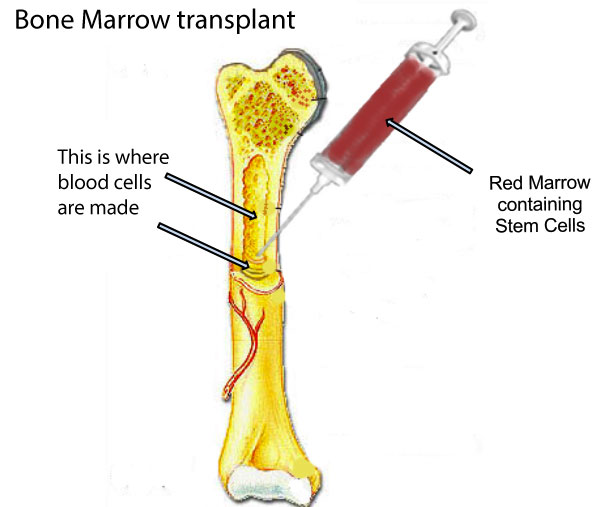Biology µGCSE:Stem Cells
10 quick questions - for GCSE and iGCSE
|
10 minutes maximum! Can you do it in 5? |
|||||||||||||||||
Q1-3: The diagram sows some of the different types of cells in a human body. The cells originate from embryonic stem cells.
|
|
||||||||||||||||
1. Stem cells are ...
| |||||||||||||||||
2. Which of the following is not true?
| |||||||||||||||||
3. Why are human embryonic stem cells so useful?
| |||||||||||||||||
| Q4-6: Bone marrow is soft spongy tissue found inside bones. Blood cells are made and stored in the bone marrow. The blood cells that divide to make all the different types of blood cell are a type of stem cell. | |||||||||||||||||
4. Which of the following is not a blood cell?
| |||||||||||||||||
| 5. If a person has a disease that affects the bone marrow, such as leukaemia a bone marrow transplant may be carried out. Healthy stem cells are transfused into the person.
To produce new blood cells the stem cells must: |
 Mugwump12 | CC-BY-SA 3.0 |
||||||||||||||||
| |||||||||||||||||
6. Why is a patient who receives stem cells given drugs to suppress their immune system?
|
|||||||||||||||||
| 7+8: Orchids are grown commercially. To get lots of identical plants like the one in the photograph plants are cloned using stem cells from the parent plant.
|
 |
||||||||||||||||
7. In plants which tissue contains stem cells?
| |||||||||||||||||
| 8. Stem cells in plants can be used to produce clones of plants quickly and economically.
Which of the following is not an advantage of using stem cell technology in plants?
| |||||||||||||||||
9. Select the correct answer in comparing stem cells in plants with those in humans.
| |||||||||||||||||
10. In some countries stem cell research is banned. This is because it is believed to be ..
| |||||||||||||||||